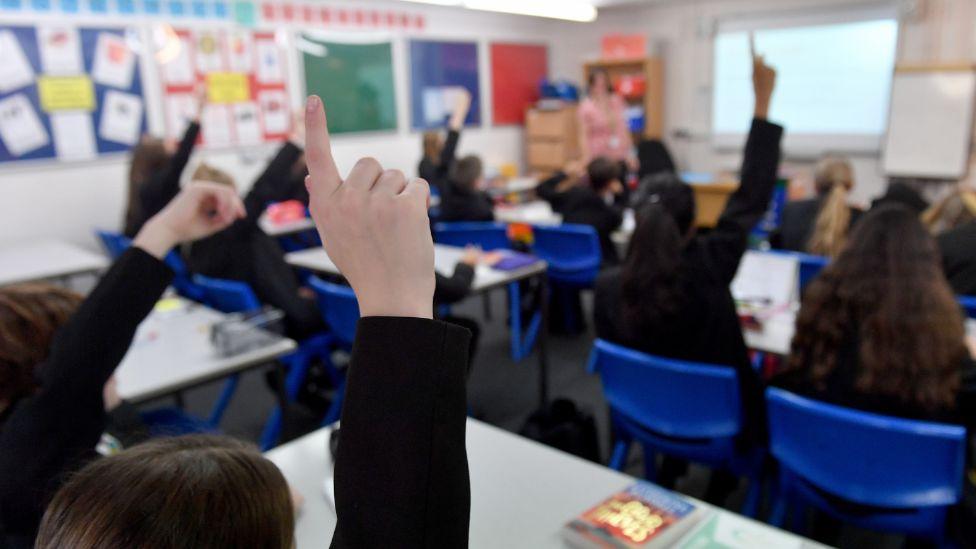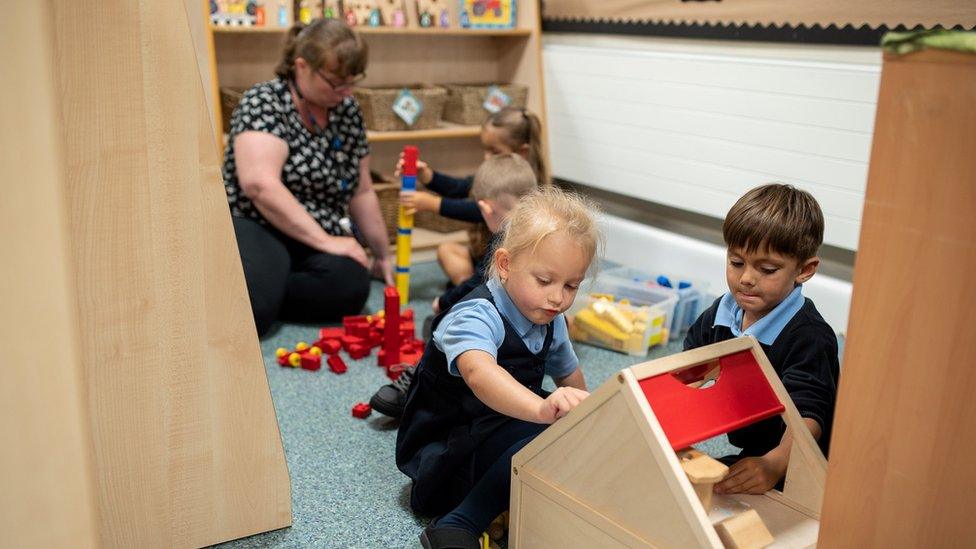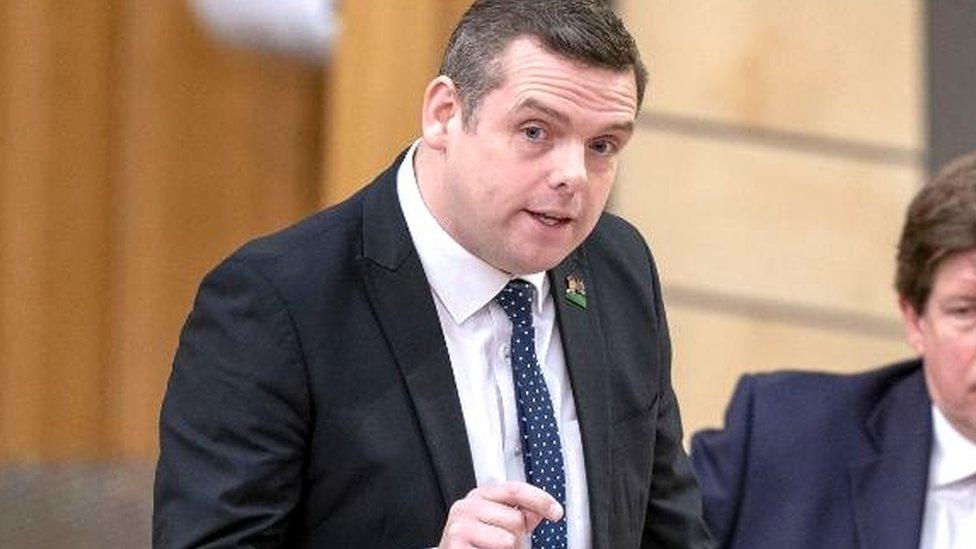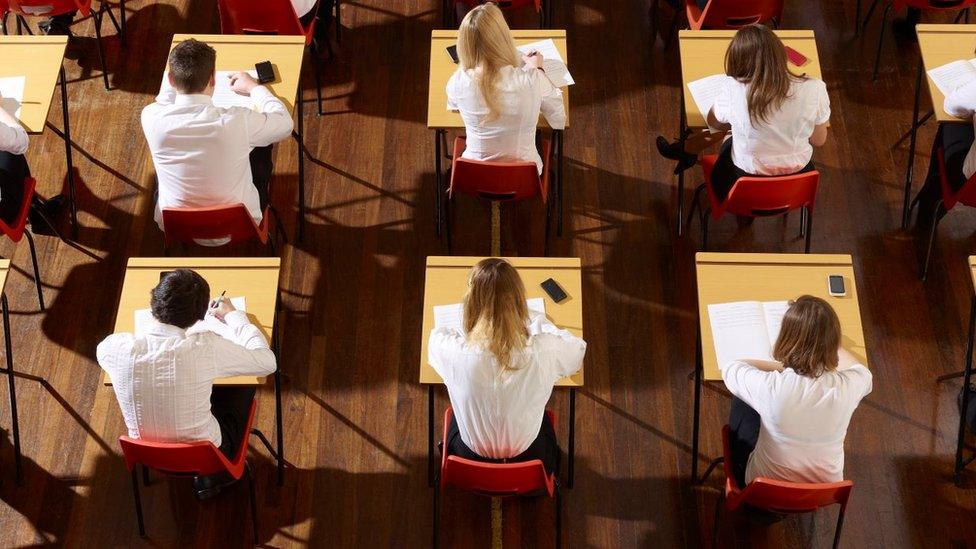One in four Scots children not reaching primary school standards
- Published

Teachers use their judgement to report on the number of pupils achieving the expected levels of education
More than one in four Scottish state primary pupils are still not achieving the literacy levels expected of them, their teachers' assessments show.
One in five pupils are not reaching the numeracy levels expected by their teachers either.
However, Scottish government Education Secretary Jenny Gilruth insisted there was a "clear rise in standards".
An international report on education released last week showed performance in Scotland's high schools had slipped.
The Pisa report, which measures education standards among 15-year-olds worldwide, showed a long-term decline in Scotland's performance in reading, maths and science.
In response to the Pisa report, Scottish ministers said Covid restrictions had a "profound impact" on education.
The latest Scottish government report is based on Achievement of Curriculum for Excellence Levels (ACEL) data in reading, writing, listening and talking, and numeracy.
Teachers use their own judgement to mark the percentage of school pupils in Primary 1 (P1), Primary 4 (P4), Primary 7 (P7) and Secondary 3 (S3) who have achieved the expected levels for their stage of learning.
Children can start learning at these levels at different ages, decided by the school depending on "individual needs and aptitudes".
Subjective judgements
There are no formal test or exams to assess pupils' attainment, but teachers have a list of "Experiences and Outcomes, external" which they use to rate progress.
The report, external authors acknowledged that teachers' judgements "can be subjective", but insisted they used a "wide range of supporting guidance, moderation activity and quality assurance checks" to make the teachers' assessments consistent and reliable.
The statistics suggested that many children were still not reaching expected levels of attainment. Across primary school, about 27% of pupils did not achieve the expected levels of literacy and 20% the expected level of numeracy.
The report also claimed the gap in attainment between primary school pupils in the most and least deprived areas narrowed to the lowest on record.
In 2022/23, the gap between primary pupils in literacy in the richest and poorest areas of Scotland was 20.5%, down from 21.3% the previous year and 20.7% in 2018/19.
'Withhold or recoup funding'
Statistics on wider issues within the education system were also released.
There was an overall drop in teachers for a second year running - 17 local authorities saw a decline in numbers with East Ayrshire, Glasgow and Moray most affected.
However, Dundee saw the largest increase in teaching staff with a 3.1% rise last year.
The average age of teachers was also found to be younger, with more than half now in the 28 to 44 age group.
Education Secretary Jenny Gilruth warned that the "Scottish government may withhold or recoup funding" from councils if teacher numbers were not maintained nationally in line with 2022 census.

There was an overall drop in teachers in Scotland for a second year running
Scottish Conservative education spokesman Liam Kerr MSP said the SNP had left teachers overstretched and under-resourced.
Mr Kerr added: "The SNP government has left teachers languishing on temporary contracts, forced councils to rely on probationers, yet the minister reiterated her threat to withhold money from councils without increased teacher numbers - at a time when local councils are on their knees begging for funding."
He said the number of support for learning staff had fallen and the poverty-related attainment gap remained "stubbornly high" - despite the SNP commitment to eliminate it.
Scottish Lib Dem education spokesman Willie Rennie MSP said: "The poverty-related attainment gap may have now returned to 2018/19 levels but that leaves the Scottish government miles away from closing it by 2026, either completely or substantially.
Scotland's largest teachers' union, the EIS, said inadequate funding over many years had left schools "under-resourced and under-staffed".
Its General Secretary Andrea Bradley said more could be achieved if the Scottish government kept its promise to employ 3,500 additional teachers.
Ms Bradley added: "The poverty-related attainment gap still persists, damaging the educational and life chances of far too many young people across Scotland... We need increased resources in schools to allow all young people to be supported properly."
Dr Patrick Roach, general secretary of teaching union NASUWT, said the Scottish government had failed to make teaching a "rewarding, secure and respected profession". He added that it was "disappointing to see the proportion of post-probationary teachers on temporary contracts rising".
'Clear rise in standards'
In a statement, Ms Gilruth celebrated the report on attainment, saying there was a "clear rise in standards" above pre-pandemic levels among primary school pupils.
"I congratulate our pupils and teachers for their hard work over the last year," she said. "Along with this year's SQA results, they point to widespread rises in attainment."
Cllr Tony Buchanan, children's spokesman for the council's umbrella body Cosla, said improvements had been made "despite the backdrop of severe and increasing pressure on local budgets and recruitment challenges".
He added: "Councils have continued to demonstrate their ambition to further improve outcomes for children and young people across Scotland."
Related topics
- Published7 December 2023

- Published5 December 2023

- Published27 January 2023

- Published10 October 2022
